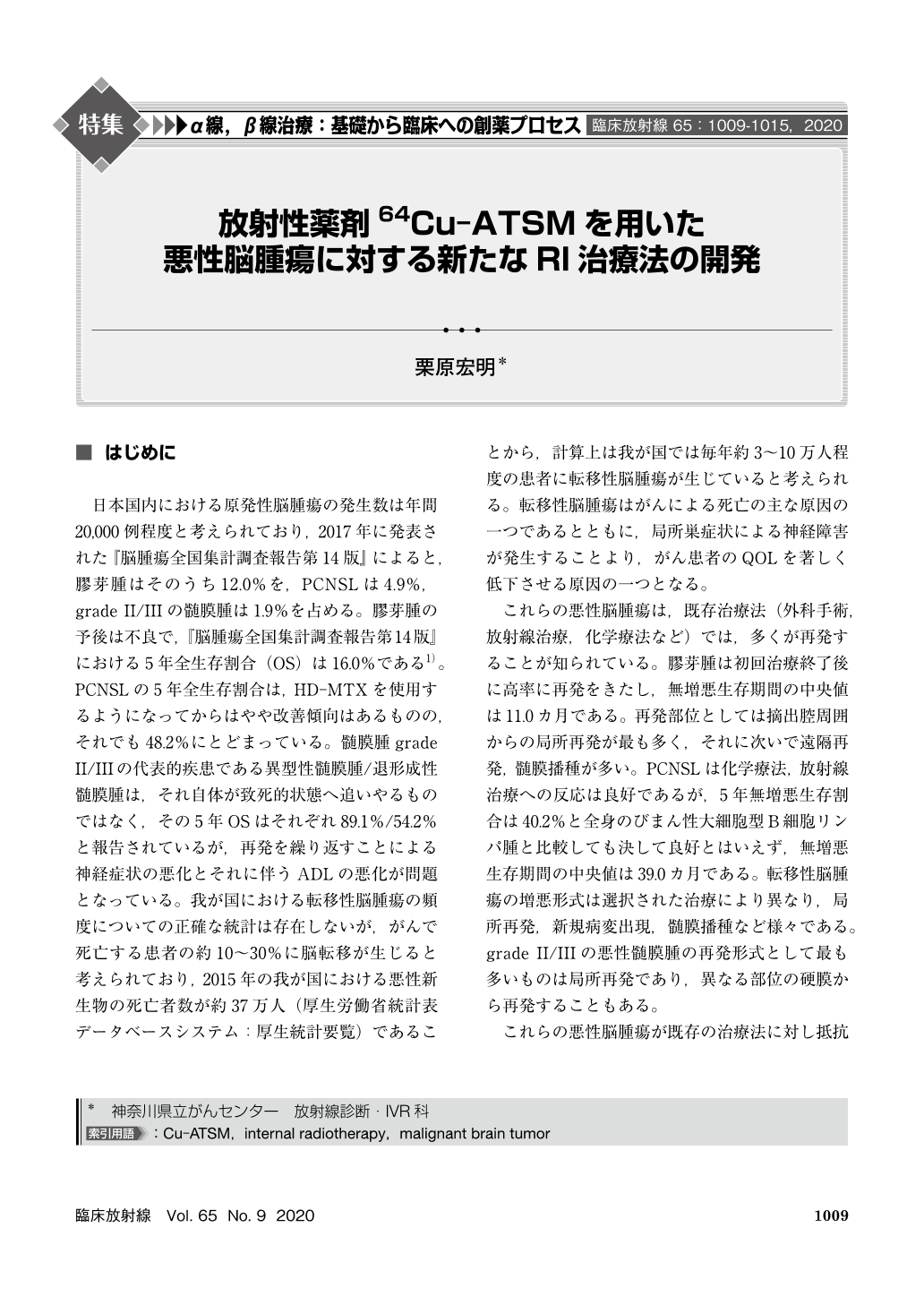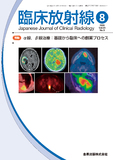Japanese
English
- 有料閲覧
- Abstract 文献概要
- 1ページ目 Look Inside
- 参考文献 Reference
日本国内における原発性脳腫瘍の発生数は年間20,000例程度と考えられており,2017年に発表された『脳腫瘍全国集計調査報告第14版』によると,膠芽腫はそのうち12.0%を,PCNSLは4.9%,grade II/IIIの髄膜腫は1.9%を占める。膠芽腫の予後は不良で,『脳腫瘍全国集計調査報告第14版』における5年全生存割合(OS)は16.0%である1)。PCNSLの5年全生存割合は,HD-MTXを使用するようになってからはやや改善傾向はあるものの,それでも48.2%にとどまっている。髄膜腫grade II/IIIの代表的疾患である異型性髄膜腫/退形成性髄膜腫は,それ自体が致死的状態へ追いやるものではなく,その5年OSはそれぞれ89.1%/54.2%と報告されているが,再発を繰り返すことによる神経症状の悪化とそれに伴うADLの悪化が問題となっている。我が国における転移性脳腫瘍の頻度についての正確な統計は存在しないが,がんで死亡する患者の約10~30%に脳転移が生じると考えられており,2015年の我が国における悪性新生物の死亡者数が約37万人(厚生労働省統計表データベースシステム:厚生統計要覧)であることから,計算上は我が国では毎年約3~10万人程度の患者に転移性脳腫瘍が生じていると考えられる。転移性脳腫瘍はがんによる死亡の主な原因の一つであるとともに,局所巣症状による神経障害が発生することより,がん患者のQOLを著しく低下させる原因の一つとなる。
Survivals of malignant brain tumors such as glioblastoma are known to be extremely low. Hypoxic environment within malignant brain tumor has been reported to be associated with the therapy-resistance. We have developed a radioactive compound of 64Cu-ATSM, which can accumulate in tumor hypoxic environment and damage the hypoxic tumor cells. We have obtained pre-clinical POC data indicating that 64Cu-ATSM can effectively inhibit tumor growth and elongate survival with low toxicity using with a mouse glioblastoma xenograft model. Clinical PET imaging study also revealed that radioactive Cu-ATSM accumulates in relapsed glioblastoma, primary central nerve system lymphoma, lung cancer, breast cancer, and so on. These findings suggested that therapeutic 64Cu-ATSM could also accumulate within hypoxic malignant tumor and kill the hypoxic tumor cell, which provide a promising option for the treatment of malignant brain tumors.

Copyright © 2020, KANEHARA SHUPPAN Co.LTD. All rights reserved.


